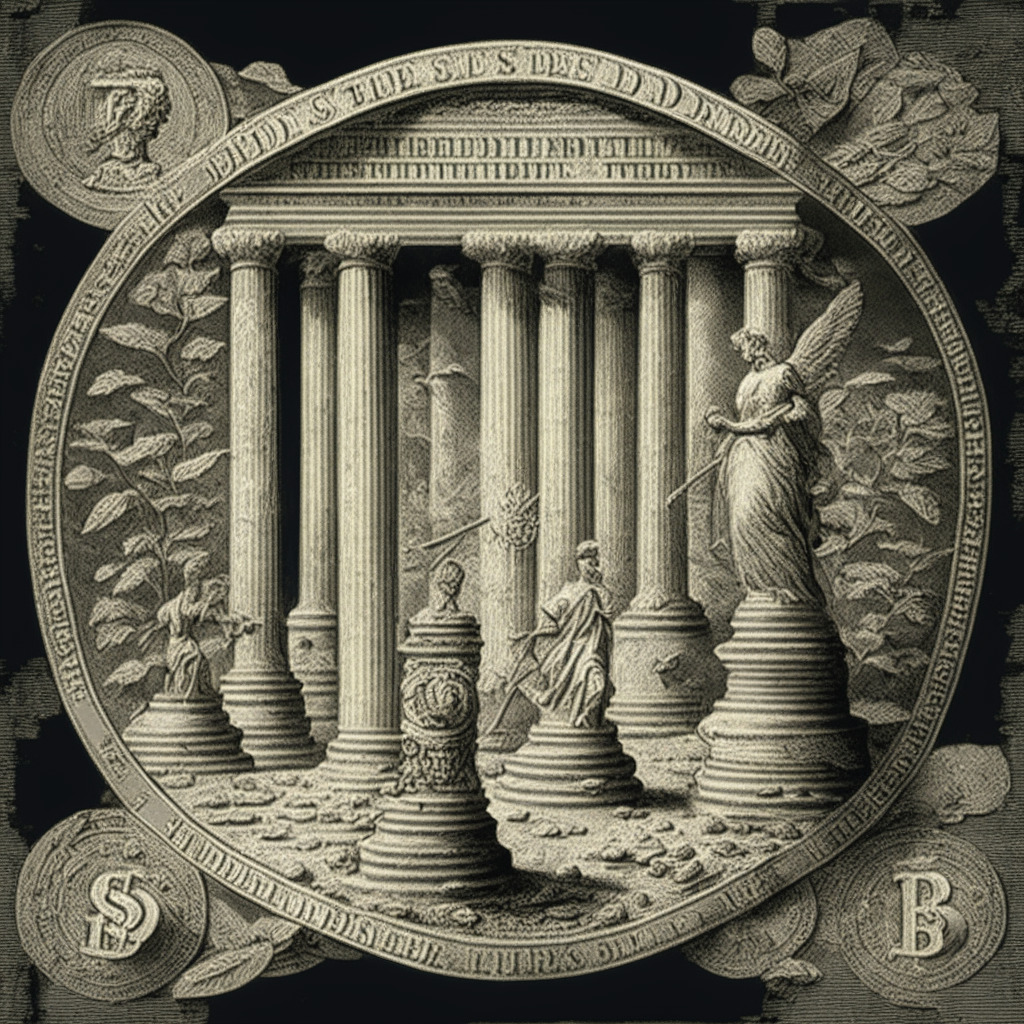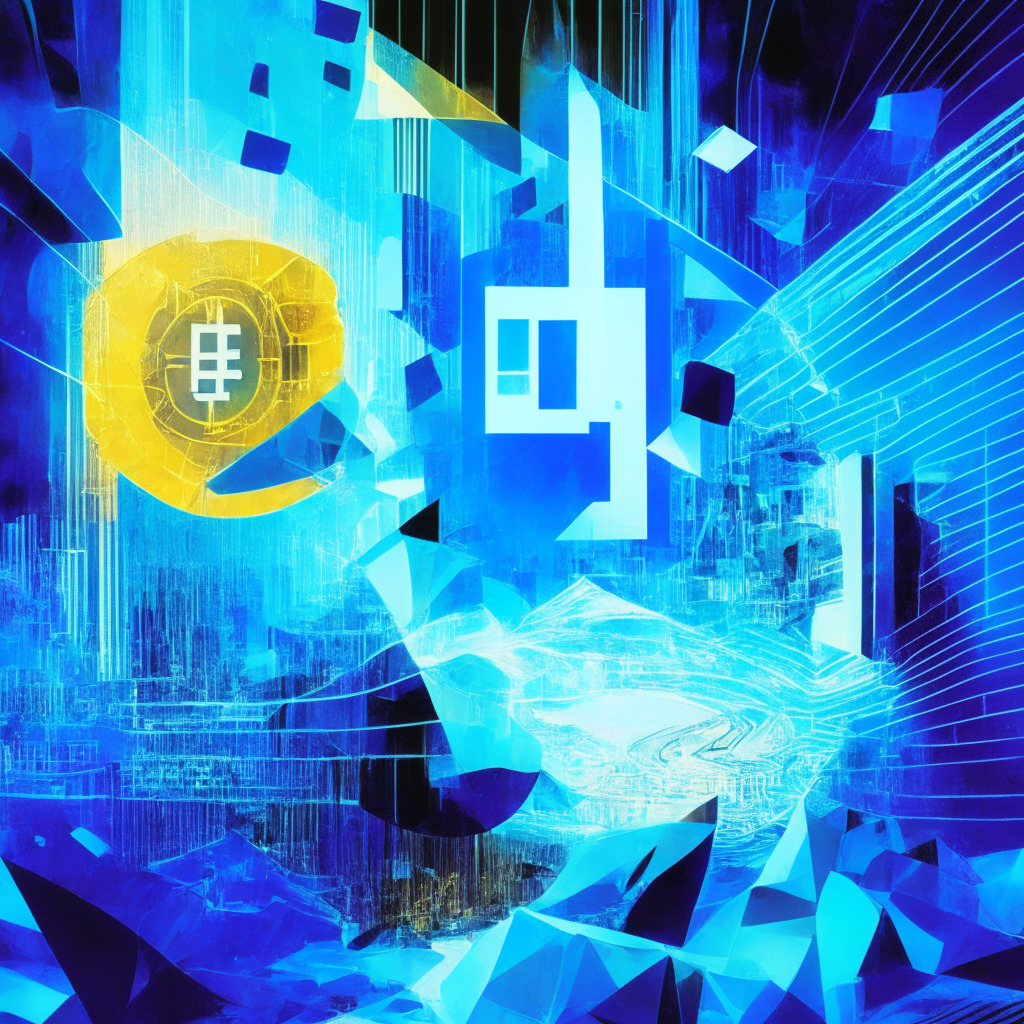“PayPal has launched its stablecoin PayPal USD (PYUSD), stirring a debate on potential implications and risks. As PayPal explores the stablecoin space, Bitstamp seeks global expansion, and Coinbase launched its Base layer-2 network. Meanwhile, Telegram bot crypto trading popularity is on the rise.”
Search Results for: stablecoin
PayPal’s PYUSD vs Major Stablecoins: A Battle for Market Share or a Losing Game?
“Bank of America suggests PayPal’s stablecoin, PYUSD, may struggle in the face of established competitors like USD Tether (USDT) and USD Coin (USDC). Factors such as lack of fresh functionality and wallet compatibility issues could impede its progress. However, PYUSD has potential to enhance customer experience within the PayPal ecosystem and capitalize on blockchain-enabled asset transfers, payments, and remittance services.”
Unleashing Stablecoins: Assessing PayPal’s PYUSD Launch Amid Political Divides and Regulatory Turbulence
“PayPal’s recent launch of its stablecoin, PYUSD, under the regulatory framework of the New York Department of Financial Services has stirred conversations about stablecoin adoption. Unlike Meta’s unsuccessful Libra, PayPal’s project is viewed more favorably politically, indicating an imminent regulatory framework for stablecoins in the U.S.”
PayPal’s New Stablecoin PYUSD: Exploring its Potential and Uncertainties
“PayPal’s recently unveiled stablecoin, PYUSD, is predicted to enhance payment efficiency. Despite optimism, reception may vary due to competition from central bank digital currencies and yield-bearing stablecoins. Current investors appear unbothered by the lack of yield and focus on safety and availability.”
PayPal’s New Stablecoin vs DEX-Launched Meme Coins: A Tale of Crypto Hype and Caution
“The recent announcement by PayPal about its new stablecoin brought skepticism due to the controversial freeze function in the contract. Amidst this, PYUSDF and Wall Street Memes emerged, representing divergent prospects in the digital currency market. Remain cautious, digital currencies are high-risk assets.”
Stablecoin Surge: Circle CEO Advocates for Digital Money Revolution and Its Impacts on Global Economy
Jeremy Allaire, CEO of Circle, highlights the need for fast progression of digital dollar and stablecoin development to preserve the vitality of the US dollar. In context of rising crypto adoption, he implies digital currencies potentially shaping future global commerce and payment protocols.
Crypto Regulations Tighten: Mashinsky’s Trial and the Controversial Role of Stablecoins
Former Celsius CEO, Alex Mashinsky, is restricted in his financial operations and movement due to charges related to cryptocurrency fraud. Meanwhile, stablecoins are being discussed as a way to ensure US dollar’s global dominance, while critics warn of potential instability. The crypto and blockchain world continues to struggle for legitimacy and stability.
Stablecoins: The Potential Lifeline for US Dollar’s Global Dominance and The Challenge of Regulation
Stablecoins could potentially retain the global dominance of the U.S. dollar, countering “de-dollarization”. The authors express that with proper regulatory frameworks, stablecoins could reestablish the U.S. dollar’s role in international trade and provide relief for hyperinflation-affected economies.
The Clash Over PayPal’s Stablecoin: Balancing Innovation and Regulation
“The U.S. House Financial Services Committee offers contrasting viewpoints on PayPal’s U.S. dollar-pegged stablecoin, PYUSD. While Rep. Maxine Waters expresses concern about regulatory oversight, Rep. Patrick McHenry proposes potential in its development. The struggle between fostering innovation and ensuring safety shows the complex challenges of the crypto industry.”
PayPal’s Plan for Issuing Stablecoin: A Bold Gamble or an Interest Earning Strategy?
PayPal plans to issue a U.S. dollar stablecoin, PYUSD, on the Ethereum network. Expected to enhance PayPal’s revenue stream, PYUSD’s underpinning structure includes earning interest on financial holdings. Through PYUSD, PayPal’s user balances can accrue interest, especially if interest rates increase, extending a revenue opportunity for the company.
Inflation Data Impact on Crypto Markets: Stablecoins as a Stabilizer vs Small Cap Coin Volatility
“The cryptosphere is experiencing market anxiety due to the U.S Consumer Price Index inflation data, impacting market dynamics significantly. While Bitcoin and Ethereum display positive trading bias, failure to surpass resistance levels evidences concern. Market stabilization is being supported by optimism around Paypal’s stablecoin, which could simplify fiat to crypto exchange.”
Regulatory Revolution: Bank of England’s Approach to Systemic Stablecoins and its Potential Impact
The “Payments Regulation and the Systemic Perimeter” framework introduced by the Bank of England specifies regulations for systemic stablecoins. The framework outlines collaboration among multiple regulatory bodies, with the Bank of England holding veto power over potential actions against important institutions. The goal is to enable safe adoption of crypto and establish a well-regulated future for systemic stablecoins.
Massive Stablecoin Growth Predicted: 2140% Rise Expected but Regulatory Challenges Loom
An astronomical surge in the stablecoin market is projected, with a 2140% increase from $125 billion to $2.8 trillion, driven by greater integration with consumer platforms. Increased collaborations between global financial and consumer platforms to release their co-branded stablecoins are anticipated. However, the challenge of stablecoin regulation persists.
Bitcoin’s Potential Surge on Spot ETF Approvals and PayPal’s Stablecoin Impact
The market anticipates a Bitcoin retest at the $30,000 threshold due to the projected approvals for Bitcoin ETF applications and growing crypto acceptance. Influential figures predict ETF sanctioning in 4-6 months, potentially accelerating Bitcoin’s value. Concurrently, PayPal plans to launch an Ethereum-based stablecoin, enhancing crypto adoption. Bitcoin’s rally could continue if it surpasses the 50-Day Moving Average. However, factors like inflation data can impact sentiment.
Unveiling Paxos Trust’s Future Vision: New Projects, Stablecoins, and a Blockchain Powered Economy
Crypto infrastructure provider, Paxos Trust, prepares for advancements in stablecoin operations, according to Head of Strategy, Walter Hessert. Projects mirror PayPal’s PYUSD, broadening its applicability from consumer payments to cross-border transactions, aiming for blockchain mass adoption.
PayPal’s Entry in Stablecoin Market: A Game-changer or Another Fizzle?
Despite Bitcoin and Ether’s recent lackluster performance, PayPal’s foray into the stablecoin market hasn’t sparked significant interest. Experts suggest an ETF-triggered catalyst or major crypto development could reignite excitement. Meanwhile, Bitstamp aims to boost its growth by welcoming strategic investors, signaling a potential shift in trading dynamics. Despite these industry moves, traders demonstrate a watch-and-wait approach towards stablecoins.
PayPal’s Foray into Stablecoin: Implications and Potential Dilemmas in the Crypto Market
“PayPal plans to create a stablecoin, PayPal USD (PYUSD), in partnership with Paxos Trust Co., marked as the first from an established financial institution. PYUSD multifaceted utility includes payments, conversions, and transfer capability to supported digital wallets. However, regulatory acceptance continues to be a major hurdle.”
Stablecoins in the UK: Balance between Consumer Protection and Systemic Stability
“The future of UK’s stablecoins appears secure following the Bank of England’s intent to establish a systemic stablecoin regime, jointly overseen by the BoE and the Financial Conduct Authority. Recent developments include an extended accountability framework and considerations towards insolvency cases. However, concerns surround potentially favouring the return of customer funds over service continuity.”
PayPal’s Stablecoin Revolution: Evolving Crypto Landscape with Regulatory Safeguards
PayPal launches its own stablecoin, PYUSD, representing a pioneering move in bringing regulatory oversight and customer asset protection to the crypto world. The coin, developed with Paxos, is closely monitored by the New York Department of Financial Services to secure it against bankruptcy risks.
Exploring the Impacts of PayPal’s Stablecoin PYUSD: Vehicle for Financial Inclusion or Corporate Gain?
“PayPal’s U.S. stablecoin, PYUSD, has sparked interest in the crypto world. Unlike smaller cryptofirms, traditional giants like PayPal can influence regulators to accommodate their aspirations. However, whether PYUSD will democratize access or predominantly serve business interests remains uncertain.”
PayPal’s Venture into Stablecoin: A Game-Changer or Just Another player?
PayPal Holdings Inc. plans to launch an exclusive US dollar-backed stablecoin, PayPal USD (PYUSD), intending to change the way stablecoins are used in daily transactions. Amid uncertainty over stablecoin regulations, many hope that PayPal’s entry could be a game-changer for the sector’s growth and investor confidence.
Paypal’s Foray into Stablecoin: Rising Competition and Shifting Dynamics in Crypto Payments
“Paypal has unveiled plans to issue a new stablecoin, PayPal USD (PYUSD), backed by United States dollar deposits and similar cash equivalents. This marks Paypal’s increasing efforts to become a key player in the crypto payment sector. The launch will heighten competition in the already packed stablecoin sphere.”
Binance’s Surprising Shift to Lesser-Known Stablecoins: Market Intrigue or Strategy Unfolded?
Coinbase CEO, Brian Armstrong, revealed that Binance traded a chunk of its USDC for another stablecoin. This reflects Binance’s increasing interest in newer stablecoins, despite market risks. With its turn towards the lesser-known FDUSD, Binance’s unusual decision indicates a notable trend within the crypto markets.
PayPal Dives into Crypto: Anticipating the Impact and Uncertainties of PayPalUSD Stablecoin
PayPal has entered the cryptocurrency market by creating its own U.S. dollar-pegged stablecoin, PayPalUSD. This move signifies mainstream acceptance of blockchain technology, but also raises concerns of centralized control and potential market manipulation in what has been a decentralized sphere.
US District Court Rules in Favor of Tether: A Closer Look at Stablecoin Regulatory Overhaul
The U.S. District Court dismissed a lawsuit against Tether and Bitfinex, rejecting allegations of false assurances about Tether’s stablecoin, USDT, being fully backed by the US dollar. Despite controversies, Tether remains a dominant player in the stablecoin market, owning a 66.7% market share.
Stablecoin Bill Approval: Bipartisanship Triumph or Political Posturing?
The recent passing of the stablecoin bill in the House Financial Services Committee highlights ongoing political tension in Washington. Despite initial bipartisan support, the bill stands as a glaring representation of political unity’s failure, caught in the crossfire of political maneuvers, with even well-intentioned legislation teetering on the edge of oblivion.
Stablecoins: A Counterbalance Against De-dollarization and Boost for US Global Standing
“U.S. regulated fiat-backed stablecoins could counterbalance the weakening dominance of the dollar due to de-dollarization efforts by BRICS and emerging markets. Pegged to the U.S. dollar, these digital tokens merge traditional currency stability with cryptocurrencies’ technological strength.”
Decoding CZ’s Take on Stablecoins: Bridging Transparency and Regulatory Challenges
Binance CEO Changpeng Zhao discussed the complexities and regulatory challenges of Stablecoins, amid growing uncertainties around major Stablecoins like Tether. To counter these uncertainties, Binance is fostering partnerships with varied Stablecoin projects and creating region-specific algorithmic Stablecoins, balancing innovation, regulatory compliance, and risk management in the evolving Stablecoin ecosystem.
Tether’s Booming Stablecoin Reserves: Strategic Masterstroke or Future Liability?
Tether, a recognized stablecoin issuer, saw its reserves surge to $3.3 billion in Q2 2023, showing strategic asset management. The company also reported a 30% quarterly profit increase with earnings exceeding $1 billion. Their portfolio includes other stablecoins and the recent success signifies viable long-term strategies, prompting confidence within the crypto community.
US Defense Bill’s Impact on Stablecoins: A Compliance Conundrum in the Offing
The U.S. national defense bill could pose compliance challenges for stablecoins like USDC due to proposed Know Your Customer (KYC) and anti-money laundering (AML) measures. The standards may affect stablecoin holders’ identities and impact USDC’s market cap. The bill’s implications could also affect Coinbase, which derived almost 27% of its net revenue from USDC in Q1 2021.
Stablecoins: A Safer Alternative to Banking or a Risky Proposition?
“Brendan Malone, a former Federal Reserve Board analyst, posits stablecoins might pose less risk than traditional bank deposits. Stablecoins, such as Tether’s USDT and Circle’s USD Coin, offer an efficiency-laden alternative to traditional banking, given its insulation from the typical crypto volatility.”
Wyoming’s Revolutionary Leap: State-backed Stablecoin Project and a Hefty Paycheck Higher than the Governor’s
The US state of Wyoming plans to hire an executive director for a groundbreaking stablecoin project, a commission introduced after the Wyoming Stable Token Act was recently approved. The commission’s authority allows it to issue a US dollar-pegged stablecoin in Wyoming, redeemable for dollars in the state’s bank account. With desired qualifications including blockchain expertise and understanding of Wyoming’s legislative operations, the Commission aims to issue a stablecoin by end of 2023.































